Forecasts of rain, thunderstorms, and overcast skies made Day 32 a great day to “get things done” while still docked at the Charleston City Marina. Captain D always has a list of rainy day items (yes, pun intended) so before I could high tail it downtown to find a cozy coffee shop in which to write, we had to check a few chores off the list.
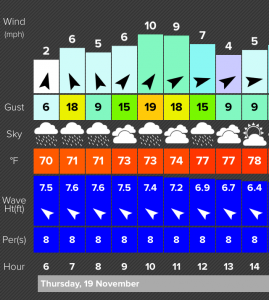
Top of the list was getting a pump-out. Yes, it’s time to share the nitty-gritty of boat living. I know some of you are wondering what we do about sewage disposal. Now trust me, I’ll make this fun, or at least you’ll get a chuckle out of some of this story. But first some background. In the USA, it’s illegal to discharge untreated sewage on inland waters and within three miles of shore. So our boat, like most sailboats our size, has a holding tank, for holding…well, you know.
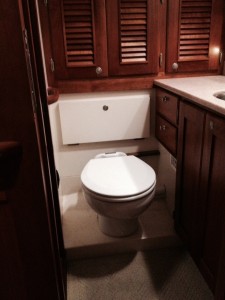
We have two heads, aka bathrooms, and the total capacity of our holding tank is 70 gallons. We have a tank monitor that helps us know when we are approaching full capacity, but as you can imagine, we try not to cut it close. So whenever we dock at a marina, we take advantage of “pumping out” whether we need it or not. We’ve learned the hard way that even if the next destination advertises a pump-out, quite frequently they aren’t operational on the day we visit, and we don’t discover that vital tidbit until too late.
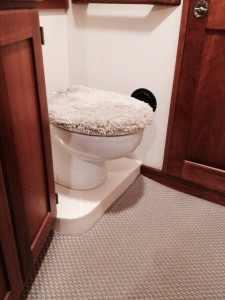
Most marinas have their pump-out hoses located near their fuel pumps, which makes it quite easy to refuel and “release” at the same time. And yes, we tip dockhands to perform doody duties, although very often we are also handling the hoses. Not a fun job, but hey, someone has to do it.
At the Charleston City Marina, they have a mobile option. Yes indeedy—a pump-out boat that travels to the boats. So we scheduled a visit, and they showed up today. I laughed aloud when I noted the name of the doody skiff: The Grateful Head. They even used the same type font as The Grateful Dead!
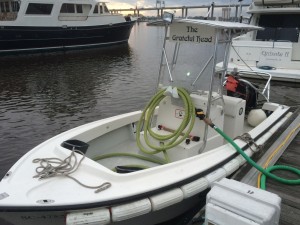
I was a bit disappointed that dock hand Robert wasn’t sporting a Jerry Garcia tie, but I digress. We got a pump-out without having to move our boat and brave those crosswinds again. Yay! Conveniently, our slip along the transient Mega Dock was located near the slow diesel pump, so we were able to also refuel without moving our boat! Double-yay! Two items on the list down, a couple more to go.
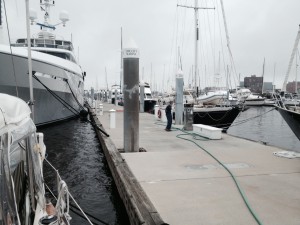
So now, let’s turn our attention to that elixir of life called water. Belle Bateau carries only 110 gallons of water, with a 65 gallon tank on the starboard side and a 45 gallon tank on the port. We used to have three tanks, but we converted one to hold diesel fuel since we had a watermaker installed, which in theory should reduce our need for large water capacity. The watermaker is a luxury item that we’ll get to use when we reach clearer waters in the Bahamas, where it will turn saltwater into potable water. But for now, we are dependent on the holding capacity of our two water tanks, which must be filled at marinas along the ICW.
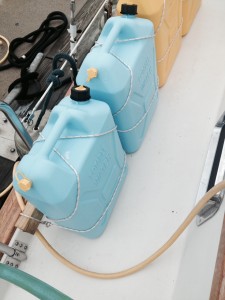
I have volunteered to be in charge of the H2O monitoring and filling. Both of us practice water conservation on Belle Bateau, even when we know that a marina may only be a day or two away. First of all, it’s good practice (and green living), and second, we never know what delays may transpire, and we don’t want to run short. We can go ten days on just 110 gallons of water, so about 11 gallons per day. If we had to conserve more, we could, and estimate we could get by on 8 gallons per day. That would include all drinking water, plus washing, cooking, coffee-making, bathing, dish washing, clothes washing, and general cleaning. It wouldn’t be easy, but we could do it (we’d skip the laundry in that case).
Just for kicks, take a look at your average water consumption in a month. Pull out your last water bill, and look at total gallons in a month, and then your average daily usage. I dug out a copy of my last water bill, and we consumed 214 gallons/day in Ellicott City. That’s almost twice the capacity of Belle Bateau’s water tanks! So what we used in an average day on land would take us 21 days to use on the water at our current usage rate. That’s staggering!

So how do we do it? We turn off the water between all latherings, teeth brushing, and dishwashing. We reuse cleaner water for rinsing. I even save the leftover water from the morning teakettle to rinse the dishes later in the day. To be fair, we do use laundry facilities on land when we can, and occasionally the bathhouses. And we have no lawn to water. But still, our reduced water usage continues to amaze us. I challenge our family and friends to consider trying something similar for one day, or one week, or a month. If you do, let me know. Could be a fun challenge for any kids out there who want to imagine living on a boat.
But back to the chore of filling water tanks. It took me just over an hour today to fill our two water tanks, and they were each only half empty. We use a filter on a typical garden hose, and it calculates gallons of water as it fills the tanks. And the process is painfully slow. I move back and forth from the tank tender at the nav station below decks to check the estimate of tankage still remaining. I sit perched above decks near where the water hose enters the tanks so I can discern the higher pitch sound of water when it’s about to overflow , and then I shut it down.
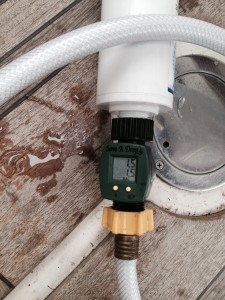
It’s not a quick and easy process. Just one more example of how life is different on a boat. So today, we refueled, topped our water tanks, and got a pumpout. The equivalent of those three chores on land takes about 10 minutes to refuel a car, and 0 minutes to get fresh water and flush a toilet. On the water, those three chores consumed about 110 minutes. Everything seems to take longer on a boat.
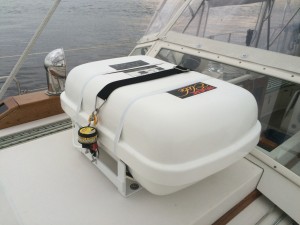
And those were just three things on the rainy day list. Dudley also installed our liferaft, a necessity before we consider venturing out into the ocean rather than along the ICW. And I cleaned our heads and shower.

To celebrate the end of a few chores, we ventured into town and had a delightful lunch at Sweetwater Cafe. Afterwards I did get to go to a coffee shop (actually two), and do a teeny bit of shopping. It was a good day. And although I’m not a grateful head, or a Deadhead, I do have a grateful heart. Grateful that we get to sail another day, with our water and fuel tanks full, and our holding tanks empty.
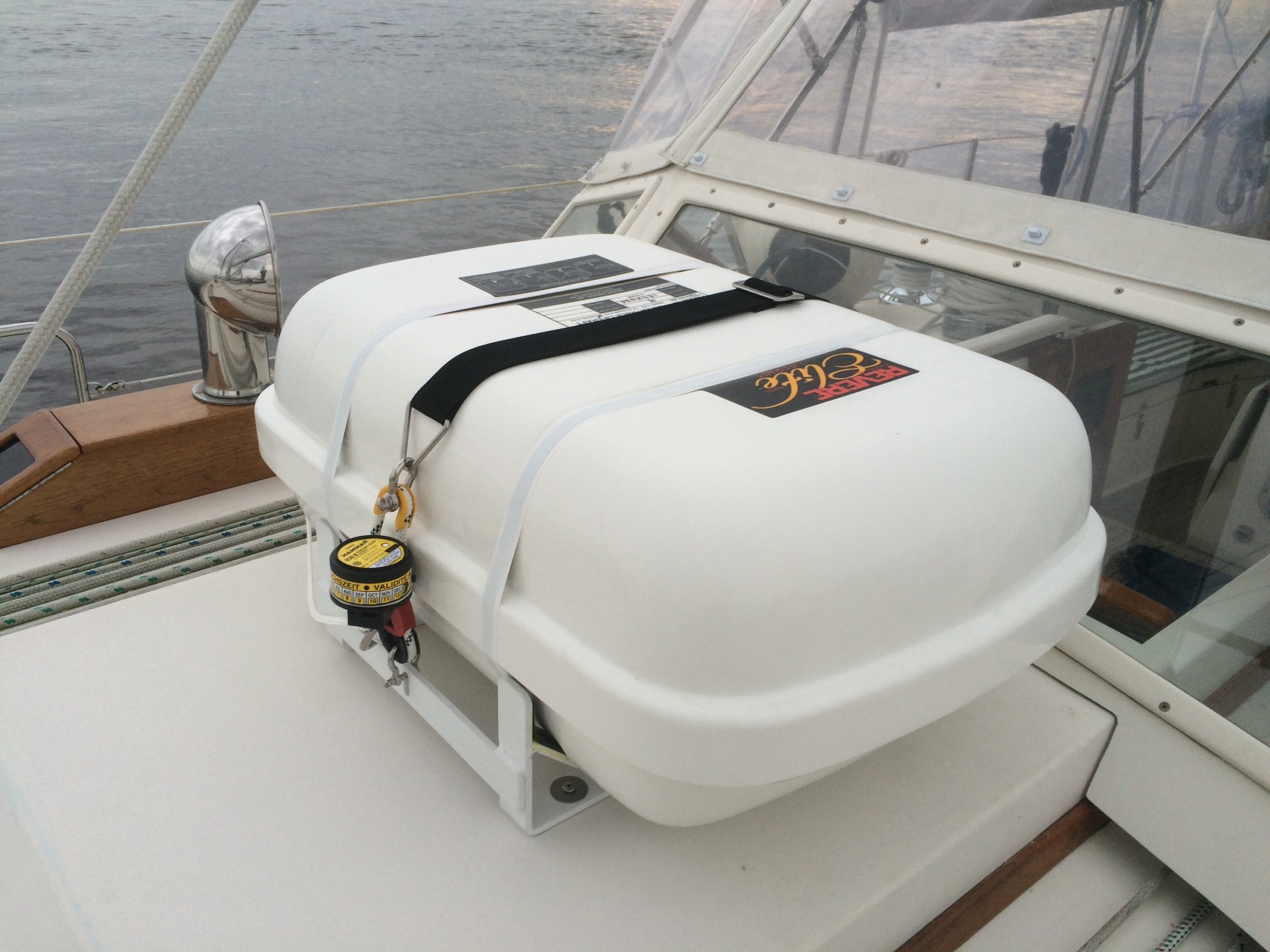
Sorry, comments are closed for this post.